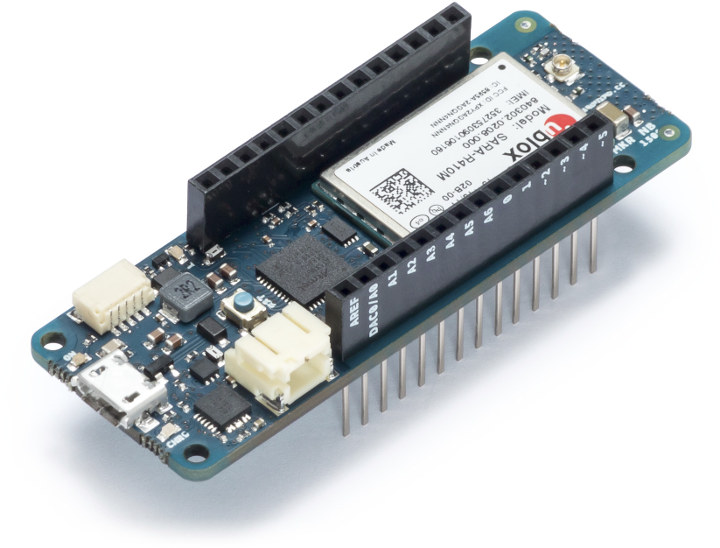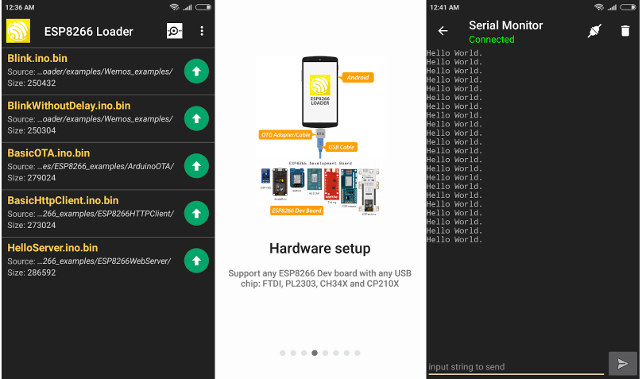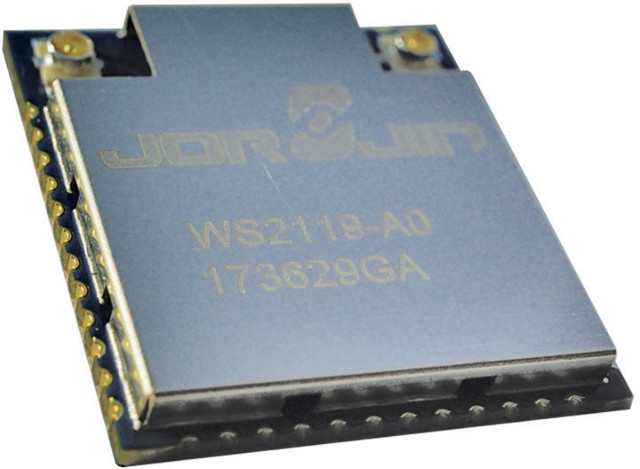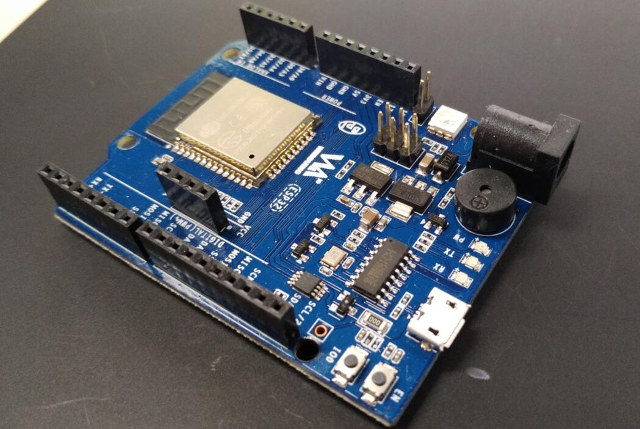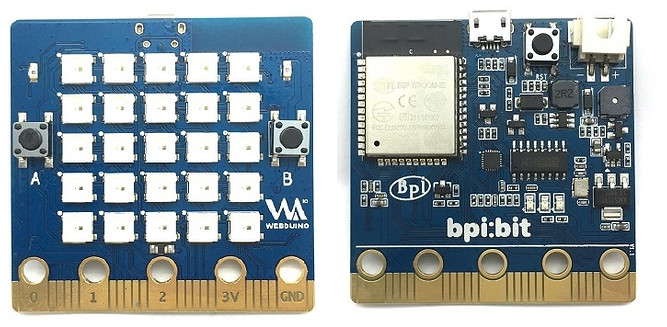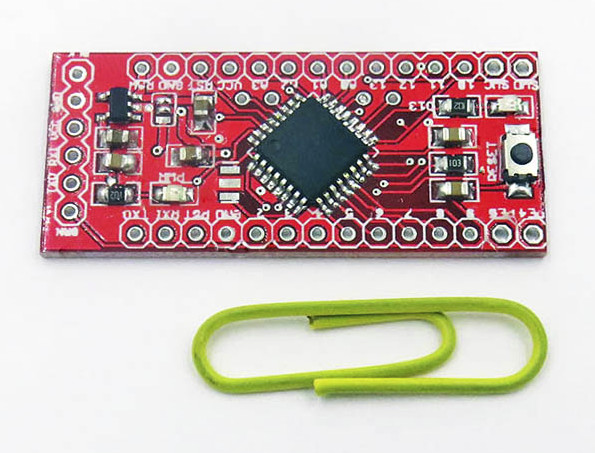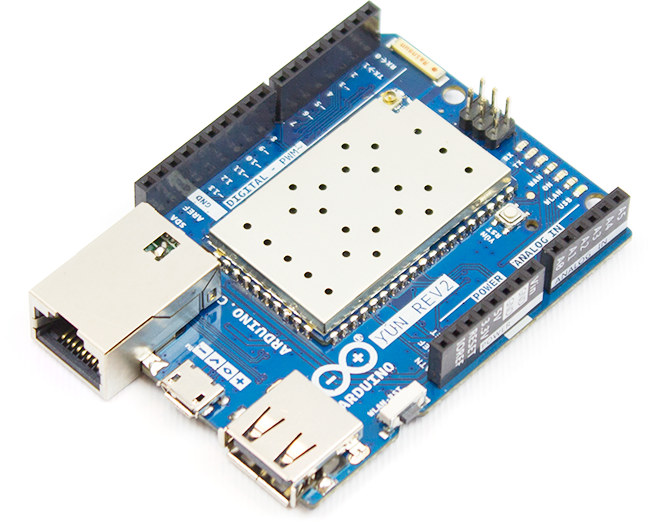Arduino introduced its MKR family of breadboard compatible maker boards with MKR1000 featuring an Atmel SAMD21 microcontroller combined with a Microchip WINC1500 WiFi module. The board was followed by MRKZero without wireless connectivity, then MKRFOX1200 Sigfox board, and finally MKR WAN 1300 & MKR GSM 1400 boards at the end of 2017 with LoRaWAN and 3.75G cellular connectivity. The company has now launched two new boards: Espressif ESP32 based MKR WiFi 1010 with WiFi and Bluetooth, and MKR NB 1500 equipped with an NB-IoT & LTE CAT M1 module. Arduino MKR WiFi 1010 MKR WIFI 1010 is an evolution of the MKR1000 board, and is equipped with a U-Blox ESP32 module. Preliminary specifications: MCU – Microchip SAMD21 Cortex-M0+ MCU @ 48 MHz with 32KB SRAM, 256 KB flash memory Wireless Connectivity – 2.4 GHz 802.11 b/g/n WiFi and Bluetooth 4.2 LE via U-blox NINA-W10 Series module based on ESP32 processor. […]
ESP8266 Loader App Allows you to Flash and Debug ESP8266 Boards from Android Smartphones
In case you’d like to flash ESP8266 boards using a phone, you can now do so with ESP8266 Loader app for Android, which also gives you access to the serial console. All you’ll need to an Android smartphone with USB OTG support, a good USB cable, and a few ESP8266 boards such as Wemos D1 mini or NodeMCU. It should also be possible to use a TV box instead. Other listed features: Support any USB chip – CDC/ACM, FTDI, PL2303, CH34X and CP210X Change the SSID & password automatically durring upload No Ads (Pro version) Access to Google Drive storage (Pro version) Multiple upload widgets button (Pro version) That’s a free app with premium features, which also means it’s not open source, so any new features would have to be implemented by the developer. I asked him whether ESP32 boards were also supported, but he answered the app only works […]
Jorjin WS2118/WS2119 is a Sigfox & Bluetooth LE Module Based on STMicro BlueNRG-1 & S2-LP Chips
Jorjin WS211X is a family of certified dual radio modules combining Sigfox wireless technology thanks to STMicro BlueNRG-1 BLE System-on-Chip (SoC) and Bluetooth Low Energy (BLE) using STMicro S2-LP sub-1GHz RF transceiver. Two models are currently available: WS2118-00 certified for Sigfox regions RCZ1 (Europe, Middle East, South Africa) and RCZ3 (Japan), and WS2119-A0 for regions RCZ2 (USA, Mexico, Brazil) and RCZ4 (Australia, New Zealand, Taiwan, Hong Kong, Singapore, Argentina). Jorjin’s WS211x specifications: Connectivity Bluetooth LE STMicro BlueNRG-1 Arm Cortex M0 @ 16 MHz with 160 kB flash, 24 kB RAM with retention Up to +8dBm BLE RF output power Sigfox STMicro S2-LP sub-1GHz transceiver WS2118-A0 – Up to +16 dBm sub-1GHz RF output power WS2119-A0 – Up to +27dBm sub-1GHz RF output power Receiver sensitivity – Up to -88dBm (BLE) and -130dBm (Sub-1GHz). I/Os – 38-pins package. Security – STSAFE-A1SX for SIGFOX secure element Power Supply – 2.0 to 3.6V Dimension […]
RAK8211-NB iTracker Battery / Solar Powered Module Comes with NB-IoT & Bluetooth 5 Connectivity, GPS, and 5 Sensors
Rak Wireless has recently launched a new products called RAK8211-NB iTracker based on a Quectel BC95-G NB-IoT module, Nordic Semi nRF52832 Bluetooth 5 chip, and Quectel L70-R GNSS module. The asset tracker module also comes with 5 different sensors to monitor motion and environmental data, and can optionally be powered directly by a solar panel.RAK8211-NB iTracker specifications: Connectivity NB-IoT via Quectel BC95-G (Global) wireless communication module + SIM card socket Bluetooth 5 via Nordic Semi nRF52832 Arm Cortex-M4F micro-controller (Arduino compatible) GPS/GLONASS via Quectel L70 GNSS module Sensors LIS3DH 3-axis “nano” accelerometer LIS2MDL 3-axis digital magnetic sensor. Tilt sensor BME280 pressure, humidity and temperature sensor OPT3001 intensity of light sensor Expansion – 3x headers with SWD, 2x sensor out + tilt out (also usable as GPIO and analog inputs), 3.3V, GND, and reset Power Supply – 3.5V to 18V via solar panel (P2) or battery (P3) Dimensions – 43mm x […]
Banana Pi BPI-ESP32 Board Follows Arduino UNO Form Factor, Works with Webduino and Arduino IDE
SinoVoIP has been pretty busy those days, as beside launching a BBC Micro:bit clone based on ESP32, and BPI-AI-Voice speech recognition board (also a clone or MicroSemi AcuEdge kit), the company has now started to take orders for Banana Pi BPI-ESP32 board for $10.99 plus shipping on Aliexpress. As the name implies, the based is based on ESP32 WiSoC, supports Arduino shields since it follows Arduino UNO form factor, and can be programming with web based Webduino visual programming IDE, or the Arduino IDE. BPI-ESP32 (aka BPI-UNO32) board specifications: Wireless module – ESP-WROOM-32 WiFi 802.11b/g/n, and Bluetooth 4.2 LE module; 4MB flash Expansion – Arduino headers with GPIOs, ADC, Ethernet, VP/VB, UART, I2C, Touch interface, etc… (See pinout table below) Misc – Buzzer, Tx/Rx LEDs, power LED, RGB LED, buttons Power Supply 5V/1A via micro USB 12V via 5.5mm DC jack Dimensions – 68 x 53 mm The company has […]
$19.50 BPI:bit ESP32 Board is Inspired by BBC Micro:bit, Compatible with Webduino and Arduino IDE
BBC micro:bit board for education was first unveiled in 2015, before starting to be given away to UK students, and later sold for about $19 in 2016. The board supports Bluetooth connectivity, includes an array of 25 LEDs, as well as a specific 20-pin edge connector also featuring 5 large holes (rings) for 3 I/Os and power. So far I had not seen any clones or alternative boards inspired from the design, as we see for Arduino or Raspberry Pi boards. But SinoVoIP (Banana Pi) has changed that with their BPI:bit clearly inspired from the Micro:bit, but offering both WiFi and Bluetooth connectivity via an ESP32 module. Hardware specifications: Wireless module – ESP-WROOM-32 module with WiFi and Bluetooth LE connectivity LEDs – 25x RGB LED array Sensors – 2x light sensors, thermistor, 9-axis accelerometer / gyroscope / compass (MPU-9250) Expansion – 3 digital/analog I/O rings, 3V/GND ring, 20-pin edge connector […]
$1.40 EDMINI Development Board Features LogicGreen LGT8F328P MCU Compatible with ATMega328P/Arduino
Arduino compatible boards are normally using Microphip Atmel microcontrollers, but as we’ve see with GD32 clone of STM32 MCU, some companies are making MCU clones too, usually with some improvements, and LogicGreen designed LGT8F328P micro-controller (mostly) compatible with Atmel ATMega328P micro-controller and adding features such as DAC output, PWM specific features, a computing accelerator (DSC), and others. The MCU also runs at double the clock speed (32 MHz). I found out about the new MCU via Electrodragon selling EDMINI Arduino compatible development board based on LGT8F328P micro-controller for $1.40. The board looks to be a clone of Arduino Pro Mini. Main specifications for EDMINI board: MCU – LogicGreen 8F328 (LGT8F328P) MCU – 99% compatible with ATMEGA328P MCU Expansion – Same pins as Arduino Pro Mini plus SWD/SWC pins, PE4/PE5 pins Misc – On-board power LED, D13 LED, reset button Power Supply – 5V RAW as VCC directly in; regulated 3.3V […]
49 Euros Arduino Yún Rev.2 Unveiled with a Lower Profile, USB and Power Improvements
Arduino Yún board launched in 2013 was the first official Arduino combining Arduino and Linux thanks to respectively an Atmel ATMega32u4 microcontroller, and Atheros AR9331 MIPS WiFi SoC running Linino, a fork of OpenWrt maintained by Arduino. The company has now launched an upgraded version – simply called Arduino Yún Rev.2 – in order to to improve security, support, and open-sourceness of the board. Arduino Yun Rev.2 key specifications have actually not changed: MCU – Microchip ATMega32U4 @ 16 MHz (as used in Leonardo board) with 2.5KB SRAM, 32KB flash, 1KB EEPROM SoC – Atheros AR9331 MIPS-based Wi-Fi SoC coupled with 64MB external DDR2 and 16MB SPI NOR flash Storage – microSD card slot USB – micro USB connector + full USB 2.0 host port Connectivity – Ethernet + Wi-Fi I/Os 20 digital input/output pins (including 7x PWM outputs) 12x analog inputs But the hardware design – this time development […]


